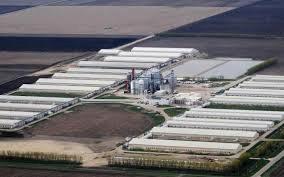 After successive years of compiling articles on weekly and monthly production data and reviewing quarterly financial performance of U.S. and international egg production enterprises it is evident that profitability across the industry is limited by overproduction of shell eggs and liquids relative to demand. There are limitations on marketing with price unfortunately serving as the major determinant of the volume of sales in the shell egg segment.
After successive years of compiling articles on weekly and monthly production data and reviewing quarterly financial performance of U.S. and international egg production enterprises it is evident that profitability across the industry is limited by overproduction of shell eggs and liquids relative to demand. There are limitations on marketing with price unfortunately serving as the major determinant of the volume of sales in the shell egg segment.
It is frequently beneficial to review the challenges faced by other industries and to analyze their solutions to low pricing power in relating to volume of production. The Schumpeter commentary in the July 10th edition of The Economist describes the response of the Permian Basin shale industry to overproduction, fluctuating and low prices and limitations on cash flow. The article highlighted the contribution of Scott Sheffield, Founder and CEO of Pioneer Natural Resources, the leading company operating in the Permian Basin. Maintaining high levels of production through the past decade contributed to U.S. energy independence. Predictably the concurrent extensive production by OPEC and the Russian Federation resulted in progressive erosion in market price consistent with the laws of supply and demand. In 2019, Sheffield returned from a short retirement to re-take the helm of Pioneer and restore profitability for his company and indirectly, his competitors.
 Recognizing reality and without evident collusion, the major producers of shale gas and oil reduced levels of output. The previous model in the Permian Basin was to reinvest revenue into further exploration and production. This required ongoing acquisition of working capital to drill and to maintain rigs at high levels of output. With a downturn in the price of crude due to world oversupply, profits plummeted and many shale operators were forced to cap wells. The major producers recognized the need for restraint both in current production and future expansion. The leaders including Pioneer and ConocoPhillips pledged to constrain expansion to a range of three to five percent annually. This approach allowed the price of both crude and gas to rise, generating $350 billion in free cash flow for the U.S. shale industry this year. Both ConocoPhillips and Pioneer posted 40 percent increases in their respective share prices in 2021.
Recognizing reality and without evident collusion, the major producers of shale gas and oil reduced levels of output. The previous model in the Permian Basin was to reinvest revenue into further exploration and production. This required ongoing acquisition of working capital to drill and to maintain rigs at high levels of output. With a downturn in the price of crude due to world oversupply, profits plummeted and many shale operators were forced to cap wells. The major producers recognized the need for restraint both in current production and future expansion. The leaders including Pioneer and ConocoPhillips pledged to constrain expansion to a range of three to five percent annually. This approach allowed the price of both crude and gas to rise, generating $350 billion in free cash flow for the U.S. shale industry this year. Both ConocoPhillips and Pioneer posted 40 percent increases in their respective share prices in 2021.
 Consolidation is the second strategy implemented by shale-oil producers. Efficiencies of scale and marketing strength have accrued from acquisitions and mergers. It is estimated that in the U.S. the top-five egg producers represent 38 percent and collectively the top-ten contribute to 55 percent of production. In contrast the top-5 broiler producers represent 78 percent of production. There is clearly potential for a more profitable egg industry characterized by fewer and more efficient producers. Consolidation especially when coupled with reduced production would serve as an efficient counter to the pressures imposed by chain store buyers using the benchmark price discovery system and major processors to hold down unit price.
Consolidation is the second strategy implemented by shale-oil producers. Efficiencies of scale and marketing strength have accrued from acquisitions and mergers. It is estimated that in the U.S. the top-five egg producers represent 38 percent and collectively the top-ten contribute to 55 percent of production. In contrast the top-5 broiler producers represent 78 percent of production. There is clearly potential for a more profitable egg industry characterized by fewer and more efficient producers. Consolidation especially when coupled with reduced production would serve as an efficient counter to the pressures imposed by chain store buyers using the benchmark price discovery system and major processors to hold down unit price.
An important lesson from the petroleum industry is that within limits, higher prices do not materially reduce demand. Admittedly petroleum fuels are not readily replaceable by available alternative sources including renewables, coal and nuclear power. To a considerable extent eggs are in a similar position. This was evidenced in in 1984 during the HPAI outbreak in Pennsylvania affecting the Northeast markets, again in 1995 during the Midwest epornitic and the episode of panic buying in March and April of 2020 following the emergence of COVID. Experience showed that consumers were willing to pay higher prices for shell eggs and egg products as do all consumers in Europe and the U.K.
Conversion from battery cages to alternative housing of hens provides an opportunity to reduce national flock size and achieve consolidation and greater efficiency. Small operations with 50,000 to 250,000 hens currently use battery cages to supply packers. A high proportion of these farms producing generic eggs will cease production as they will be unable to raise capital to install aviaries or floor-housing. Some large producers will continue to close obsolete operations, a trend which became evident this year. From the perspective of banks and other financial institutions, the situation of many small-scale producers of generic eggs reflects the experience of a hypothetical producer who won a state lottery. When asked what he would do with the money he indicated that he would just go on producing eggs until it was all spent! Many operations will be forced to sell their facilities if buyers are available or close as they exhaust working capital.
Producers, many of whom are third-generation egg farmers, live in eternal confidence that "the market will pick up before before Christmas". While this is historically true, the amplitude of the rise is progressively less pronounced each year and higher feed, labor, fuel and packaging cost are eroding profits.
The industry cannot look to some phase-shifting event or trend to radically increase demand. The American Egg Board mounts campaigns to promote consumption by both the consumer and institutional segments, but this is reflected in only incremental increases. Demand has increased annually by 2.4 eggs per capita on average since 2017. The valuable efforts and programs implemented by the AEB cost $25 million each year representing 0.3 cents per dozen as a check-off fee. It may well be that without promotion by the AEB sales would have declined over the past ten years. Certainly the AEB managed to dispel the cholesterol myth and arrest the decline in consumption during the 1980's.
The U.S. egg industry must come to terms with reality. There are too many hens and too many producers allowing chain buyers to manipulate the benchmark wholesale price to depress unit revenue. Those who lead the industry should independently be considering strategies that involve flock reduction, industry consolidation and greater pricing power.